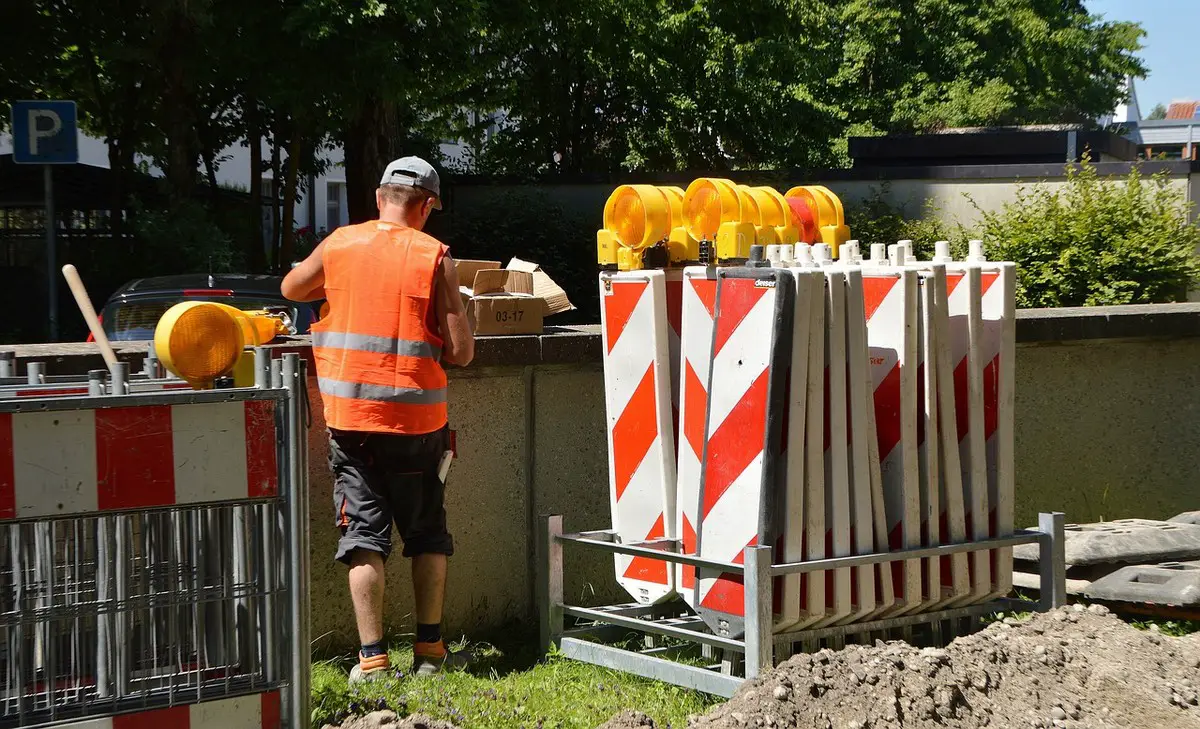Why safety barriers are crucial for work zones guide, Construction site H&S advice, Road collision control, CPR first aid
Why Safety Barriers are Crucial for Work Zones
1 December 2023
Work zones are a sight on roads, highways, and construction sites. They are areas where construction or maintenance work takes place, posing risks to both workers and motorists. As a side note, we recommend enrolling your workers in Oakville CPR and first aid training to enhance in-site safety and prepare them for emergencies.
To address these risks and ensure the safety of everyone involved, the presence of safety barriers is crucial. Safety barriers are structures designed to separate work zones from traffic, effectively preventing accidents and reducing the impact of collisions. In this blog post, we will delve into the importance of safety barriers in work zones and how they benefit safeguarding workers and motorists.
-
Protecting Workers
One of the reasons why portable safety barriers hold importance in work zones is their role in protecting workers. Construction and maintenance tasks often involve working in proximity to moving traffic, which significantly increases the risk of accidents and injuries for workers. Safety barriers act as a shield by creating a separation between workers and traffic flow. These barriers not only provide a barrier but also help minimize the likelihood of workers being struck by passing vehicles. By implementing safety barriers, employers demonstrate their commitment to prioritizing their employees’ well-being.
-
Ensuring Traffic Control
Maintaining traffic flow is crucial within work zones.
Safety barriers have a role in managing traffic flow, especially when it comes to redirecting vehicles from construction or maintenance work areas. Their purpose is to provide a designated path for vehicles, which helps reduce confusion and the likelihood of accidents caused by lane changes or incorrect maneuvers. By guiding traffic in a manner, safety barriers contribute to maintaining order and ensuring an environment for everyone involved.
-
Ensuring Accident Prevention
One important aspect is accident prevention. Work zones pose hazards like surfaces, temporary signage, moving equipment, and changing traffic patterns. These factors, combined with drivers who may be distracted or unfamiliar with the area, can significantly increase the risk of accidents. Safety barriers act as obstacles that prevent vehicles from entering the work zone area, thereby reducing the chances of collisions and minimizing the severity of accidents that do occur. They effectively separate traffic from work areas, playing a role in accident prevention and creating a working environment.
-
Minimizing Injuries and Fatalities
Another key benefit is minimizing injuries and fatalities. Accidents occurring within work zones can have consequences including injuries and even fatalities. In this regard, safety barriers play a role in mitigating the impact of collisions and reducing the severity of injuries sustained by individuals involved. By absorbing much of the energy generated during crashes, they act as cushions that lessen the force transferred to both vehicles and individuals involved in accidents.
By creating a designated area of separation, safety barriers play a role in safeguarding the well-being of workers and drivers while also reducing the likelihood of accidents.
-
Adhering to Regulations
Safety regulations governing construction zones are specifically designed to ensure the protection of workers and motorists through the enforcement of consistent safety standards across different projects. Complying with these regulations is absolutely crucial for construction companies and contractors. Safety barriers are a component mandated by regulations, and failure to install them can result in penalties and legal liabilities. By incorporating safety barriers within work zones, companies can effectively demonstrate their commitment to safety while also ensuring compliance with regulations.
-
Visual Guidance
In work zones, effective communication is paramount in order to alert drivers about construction or maintenance activities. Safety barriers serve as aids that clearly demarcate the boundaries of the work zone, effectively notifying drivers to exercise caution. By employing materials and high visibility markings on these barriers, visibility is significantly enhanced during both nighttime conditions. This ensures that drivers remain fully aware of approaching work zones along with their associated hazards.
-
Temporary Traffic Control
Work zones are typically temporary in nature, with construction or maintenance tasks being carried out for a duration of time. Safety barriers offer a solution for traffic control as they can be conveniently installed and removed whenever necessary.
Portable safety barriers, such as barriers filled with water or modular systems, offer the convenience of setup and removal while still maintaining the separation between traffic and work zones. This flexibility allows construction crews to effectively manage traffic during their projects and adjust to changing circumstances.
Why safety barriers are crucial for work zones Conclusion
Safety barriers play a role in work zones by providing protection for workers, traffic control, accident prevention, injury reduction, compliance with regulations, visual guidance, and temporary traffic management. By investing in safety barriers, construction companies and contractors can create work environments that safeguard their employees’ well-being and mitigate the risk of accidents in work zones.
Ultimately, the installation of safety barriers demonstrates a commitment to safety consciousness and responsible construction practices.
Comments on this guide to Why safety barriers are crucial for work zones article are welcome.
Construction Safety
Construction Safety Posts
Importance of health and safety in architecture
Common construction site injuries
Construction industry health and safety importance
Why Construction Safety Is Important
Buildings
Architecture Articles
Comments / photos for the Why safety barriers are crucial for work zones advice – CPR and first aid guide page welcome.


